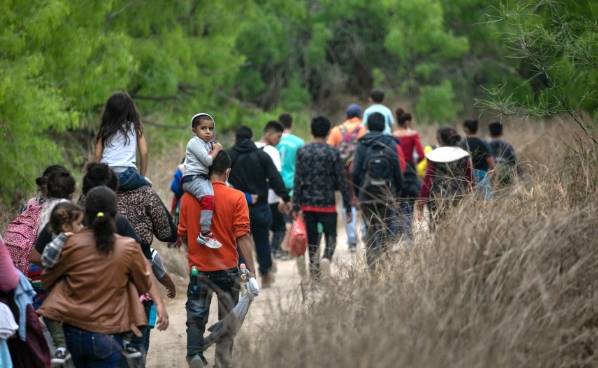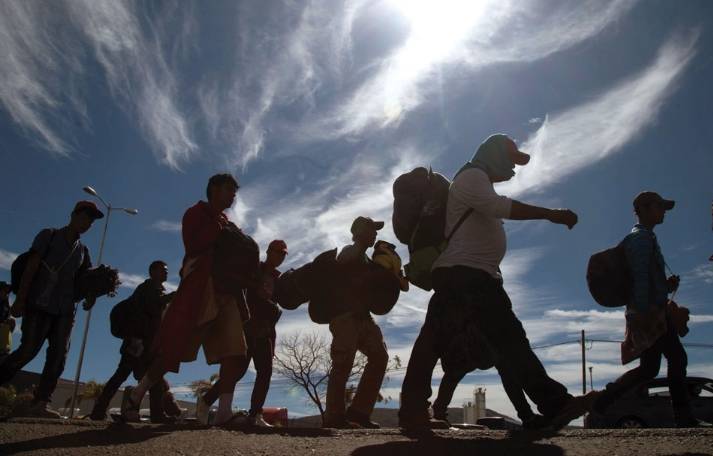
The way migrants attempt to reach the United States through Mexico has been altered by the availability of social media, messaging, and geolocation on mobile devices, which puts them at increased risk in their interactions with human smugglers.
The International Organization for Migration (IOM) conducted a study titled ‘Information and communication technologies and the smuggling of migrants in Central America, Mexico and the Dominican Republic’, which highlights how criminal networks and migrants adjust to the technological landscape.
In an interview with EFE, Estela Aragón, a research officer for the Mesoamerica-Caribbean Regional Program on Migration at IOM, stated that migrant smuggling networks frequently modify their tactics and utilize technology to carry out their operations.
Due to the pandemic and movement restrictions, including those related to migration, the use of platforms like TikTok by “coyotes,” or migrant smugglers, to offer their services or track their clients’ journeys through instant messaging has increased.
Aragón explained that there is a significant risk of fraud as migrants often do not have face-to-face contact with the smugglers and end up making illegal payments for services. “Coyotes” have the ability to break off contact when it suits their safety, thereby leaving the migrant to bear all the risk.
The report also emphasizes the advantages that technology provides for migrants, such as the ability to access information on routes, maps, and stay in touch with their families.
The majority of migrants who use technology are between the ages of 26 and 35, as per the report, with 64% of migrants acknowledging the use of technology. On the other hand, those over the age of 46 are less likely to use technology.
The organization conducted interviews with 531 adult migrants from Colombia, Ecuador, El Salvador, Haiti, Guatemala, Venezuela, Guinea, Italy, or Jordan, who are targeted by human trafficking networks. The migrants were asked about their use of technology.
The questionnaires were conducted at various locations along the migratory route to the United States, starting from Panama and moving through Costa Rica, Honduras, and several Mexican states such as Chiapas, Oaxaca, and San Luis Potosí.
“Coyotes” in Mexico

María Eugenia Anguiano, a researcher at the College of the Northern Border (Colef), spoke to EFE about the dangers migrants encounter while crossing Mexico, which is a crucial step towards reaching the United States. She described the northern Mexican border as a “funnel” through which organized crime seizes control of migrant smuggling, leading to incidents of theft, assault, murder, and disappearance.
While criminal networks are adapting to technology, it also poses new risks for migrants, including the breach of digital privacy, trafficking, and online sexual exploitation. Aragón further stated that technology is heavily relied upon to guide migrants through the desert, especially for those who commence their journey in Mexico City, with most guidance given through instant messaging.
According to Aragón, “coyotes” remotely track the location of the migrants who have hired their services and provide guidance on how and where to cross through northern Mexico. By doing so, they minimize the risk of being detected by authorities and leave the migrants vulnerable and unprotected.
Role of the authorities

The report suggests that the authorities in countries along the migration routes to the US should adopt measures to safeguard and investigate the crimes that migrants are vulnerable to, including those involving technology.
The IOM researcher emphasized that Mexican authorities are making significant efforts to encourage orderly migration through legal channels and are using social media to combat illegal trafficking and disseminate trustworthy information.
Anguiano viewed the recent launch of the US CBP One application, which aims to expedite asylum requests in the country, as a clear illustration of technology being utilized for the enhancement of migration management.
Despite this, in the past month, stranded migrants at the border have raised concerns over the tool’s saturation and glitches. The region is currently facing an unprecedented surge in migration, with 2.76 million undocumented immigrants apprehended at the US-Mexico border in the 2022 fiscal year.





